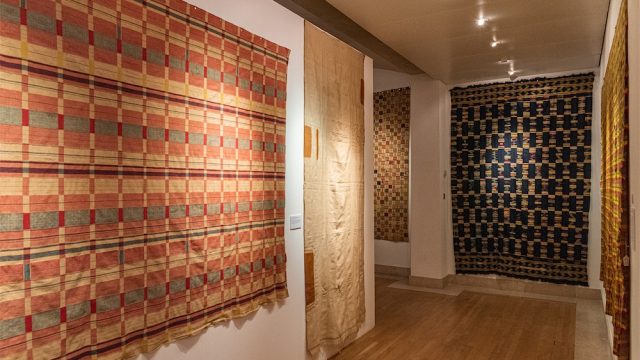In the winter of 2023, I spent three months on placement at the V&A, where I researched the provenance of the museum’s South Asian collections as part of a Doctoral Training Partnership (DTP). The V&A’s provenance research placement was an attractive opportunity for me, as a PhD student who studies the history of collecting in colonial India and is interested in a career in the heritage sector.
During the placement I investigated the provenance of the V&A’s South Asian objects that entered the collections after the arrival of the India Museum holdings in 1879 and before the Partition of India in 1947. During these roughly five decades, the museum acquired around 13,000 objects from India. Their acquisition was recorded in the museum’s Central Inventory records and the Asia Department Acquisition registers. These registers record in varying amounts of detail, information about the object – including its description, price, condition and most importantly for provenance research, the source from which it was acquired, whether through purchase, gift, or bequest. One of the outcomes of my placement is that all of the provenance information contained in these archival documents, for objects acquired between 1880 and 1922, is being made available on Explore the Collections.

The placement also gave me the chance to pursue some lines of enquiry that aligned with my research interests. I have been trying to uncover the role of Indian collectors, scholars, and dealers in Indian coins. I was particularly curious to learn more about figures with South Asian heritage who contributed to the V&A’s South Asian collection. I therefore spent many days at the National Art Library, going through the different vendors’ Nominal Files – which contain all documents and correspondence related to their dealings with the V&A.
Through these resources I learnt, for instance, about the Parsee merchants F P Bhumgara & Co, who became jewellers to the court of Queen Victoria, and Procter and Co, who specialised in dealing objects from South Asia, and sold items to many UK museums. I also researched prominent Indian collectors whose collections are in the Asia department, and wrote entries about their collecting interests for Explore the Collections. I wrote about the Pune Chitrashala Press, which was established in Western India to promote the development of fine arts in India, the Bengali Musicologist Rajah Sir Sourindro Mohun Tagore who presented a collection of musical instruments to the V&A in 1890, and the collection of the industrialist Sir Ratan Tata which was bequeathed to the museum by his wife Navajbai Sett (1877 – 1965), also known as Lady Ratan Tata, in 1920. As part of my research, I found that in the late 19th and early 20th centuries, British coin collectors stationed in the northwest region of India purchased coins in local bazaars from coin dealers, who became important suppliers for British collectors of Indian coins. As part of my placement, I discovered that interestingly, some of these Rawalpindi-based dealers, also sold antiquities such as seals and sealings to the V&A.
The three months at the V&A, made possible by my Arts and Humanities Research Council-funded Collaborative Doctoral Partnership PhD, have been one of the highlights of my PhD journey, where I was able to spend time with the objects from the South Asia collection and uncover more about their journey to the V&A. During my time in South Kensington, I was based in the Asia department and V&A Research Institute (VARI) and benefitted immensely from the valuable guidance and expertise of my supervisors, Divia Patel and Jacques Schumacher. I enjoyed interacting with colleagues in the Asia department, whose interest in various aspects of Indian art and design piqued my curiosity and contributed to my research and had the exciting chance to present my findings about the dealers to colleagues at a Lunchtime Research Seminar. It was a rewarding experience as their questions and comments helped me pursue more lines of inquiry. Insights gained from learning about Indian dealers and collectors, some of whom also collected coins, will continue to be of value as I move ahead in my Ph.D, and I am grateful to the V&A staff, and my supervisors for making this such a rewarding experience.



Beautiful article about coins in British museums. During my last visit to UK , I was in V&A. It’s a beautiful museum. I hope for more articles from Shreya in coming years.